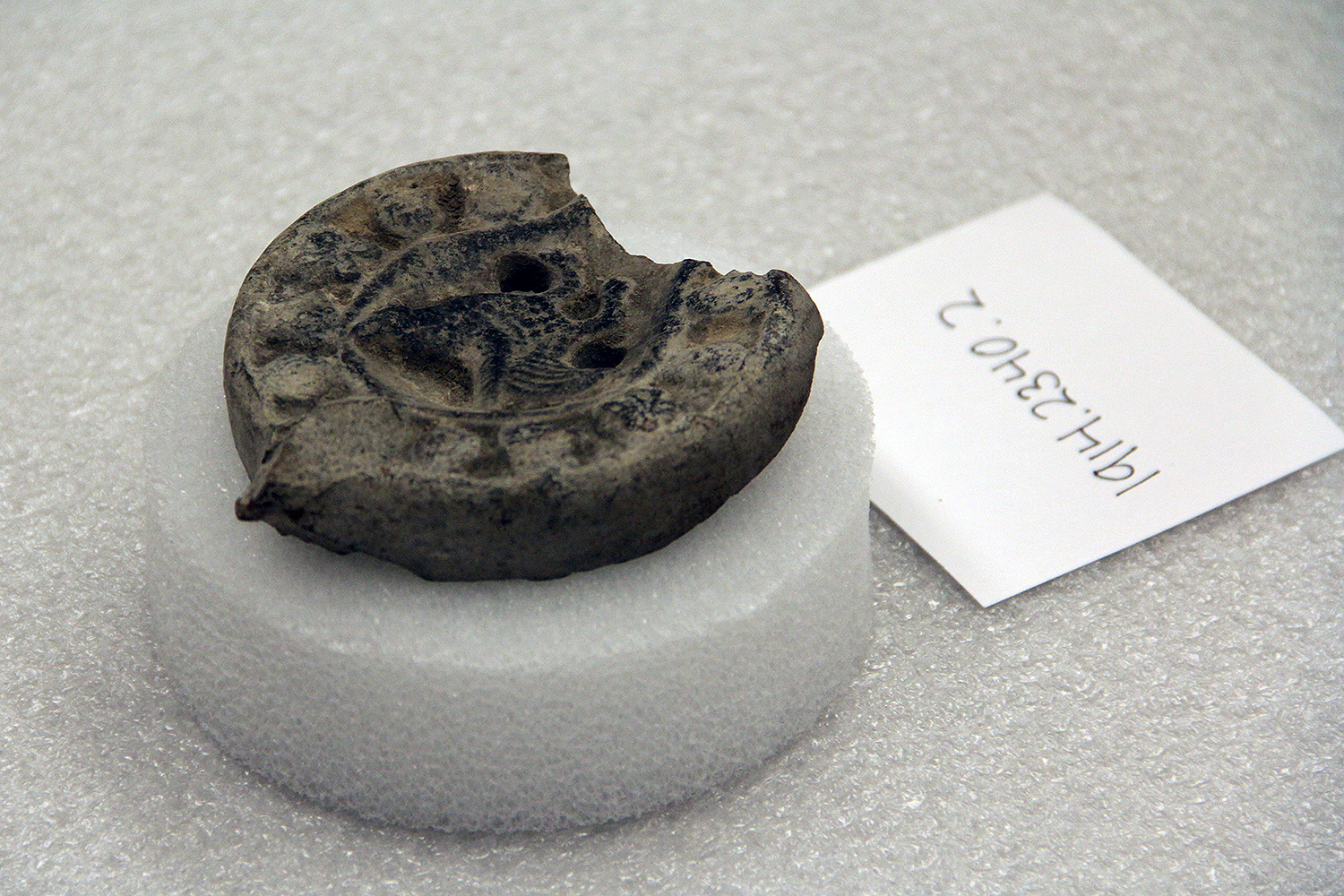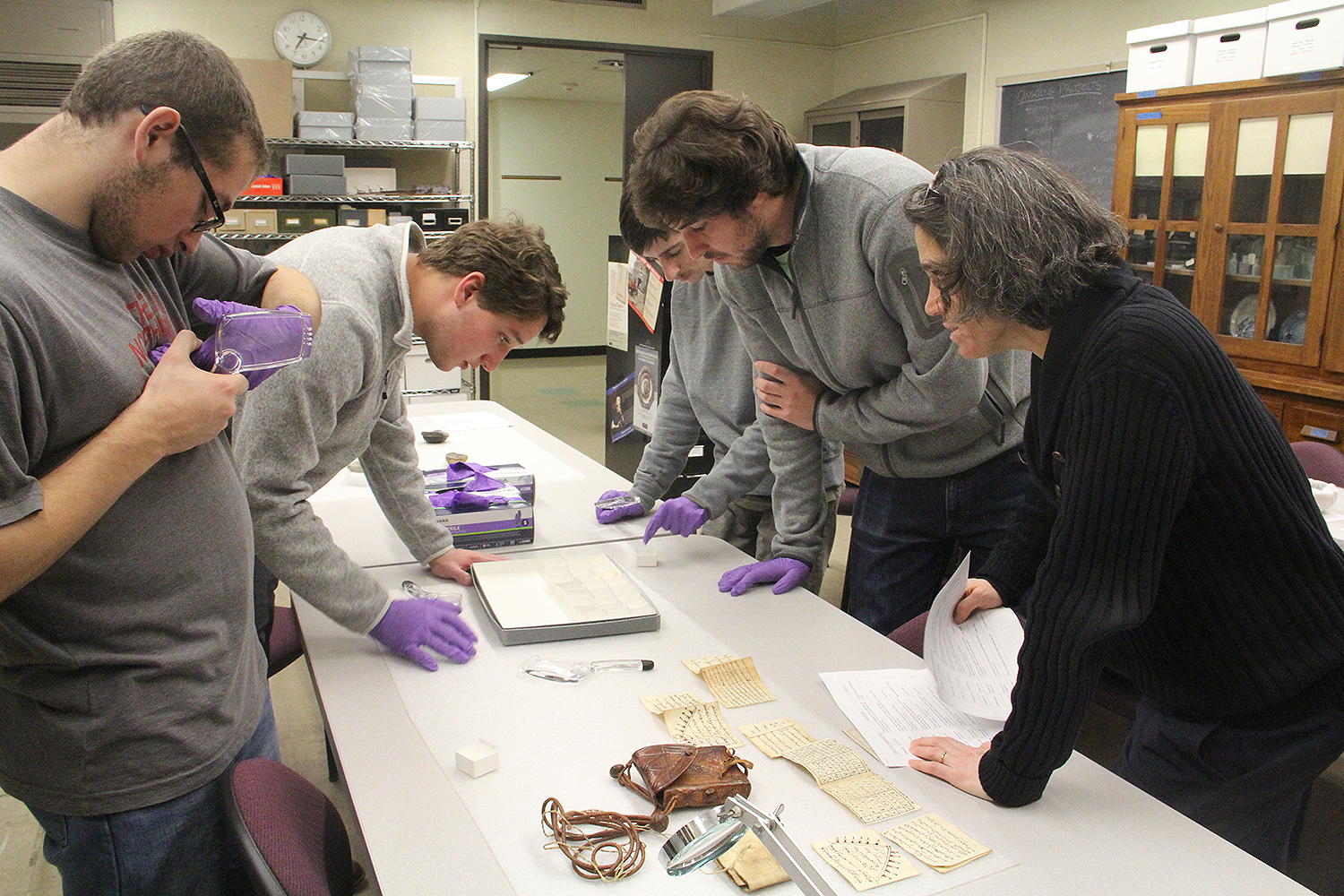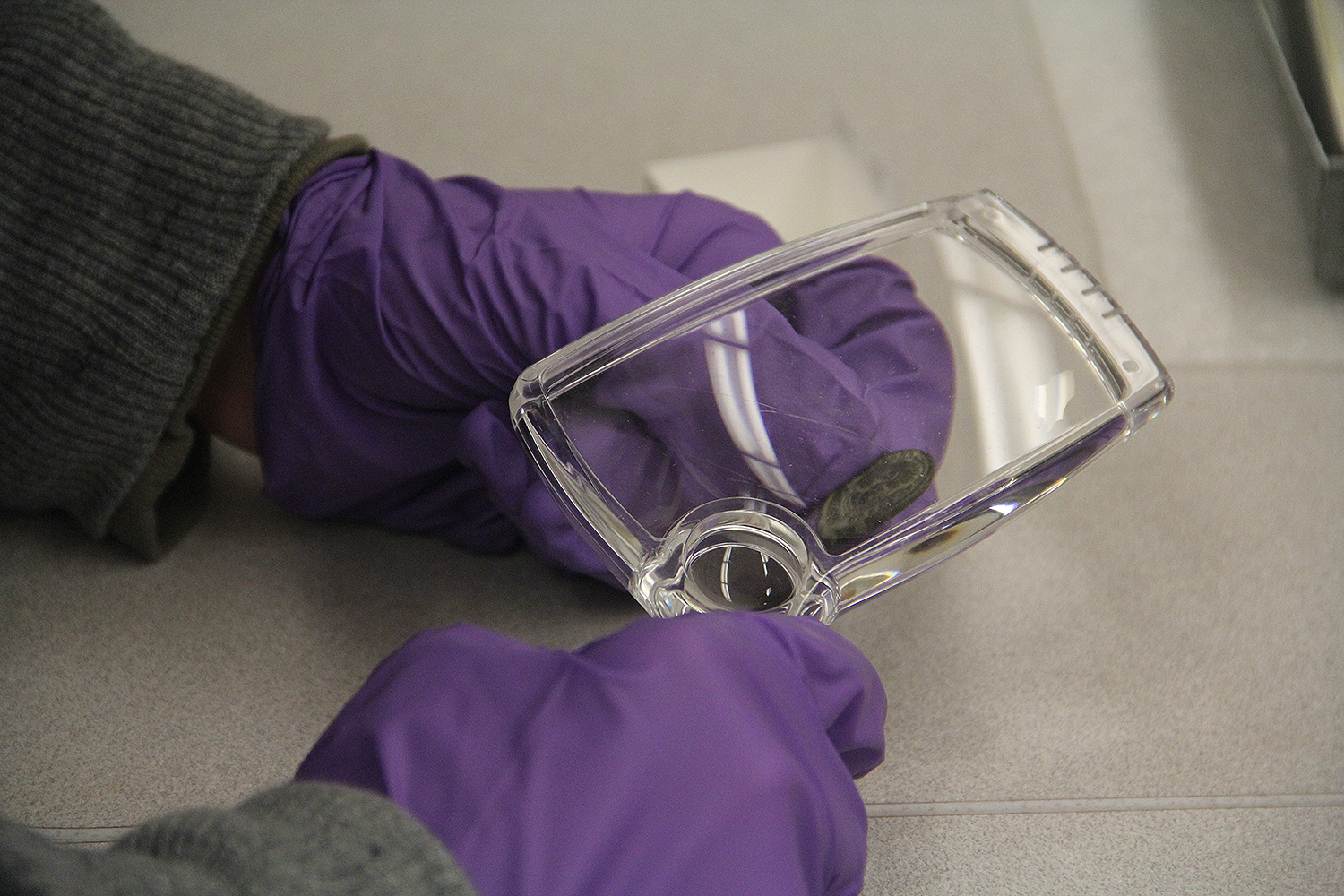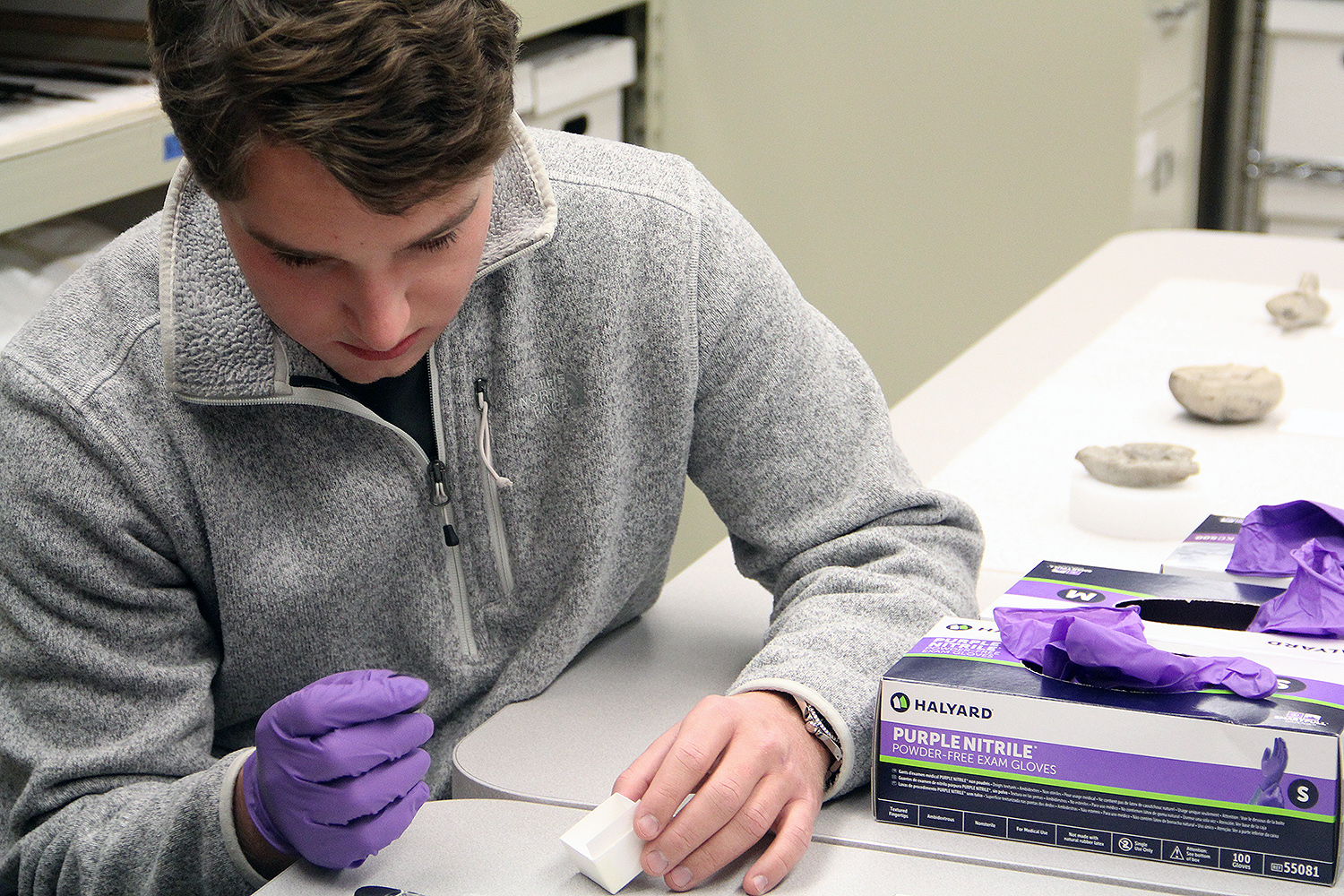Anthropology, Archaeology Collections Offer Hands-On Learning
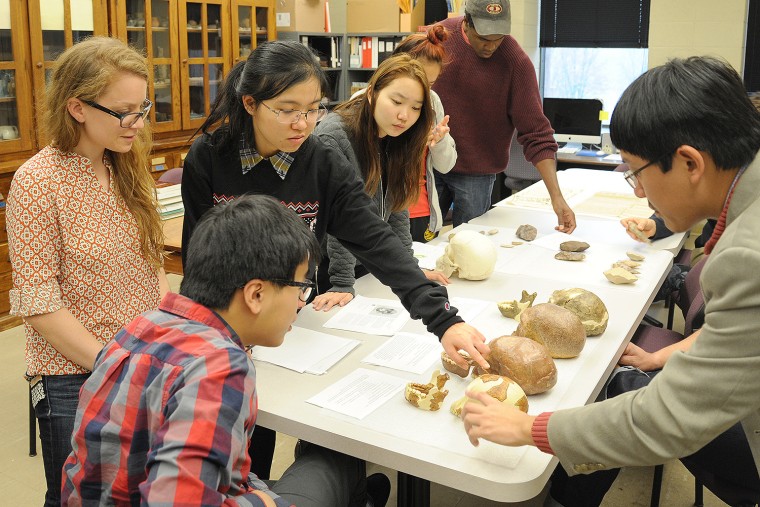
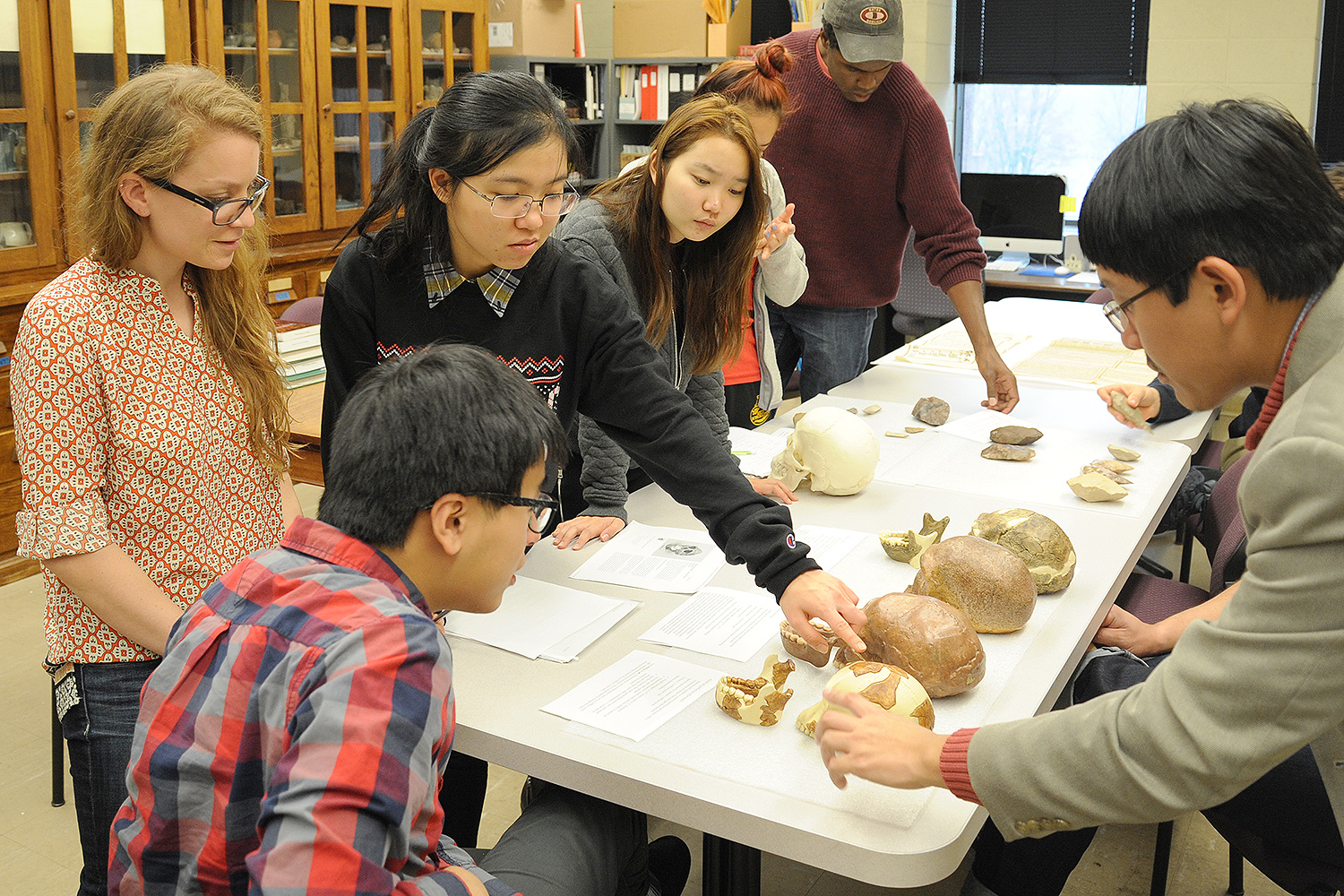
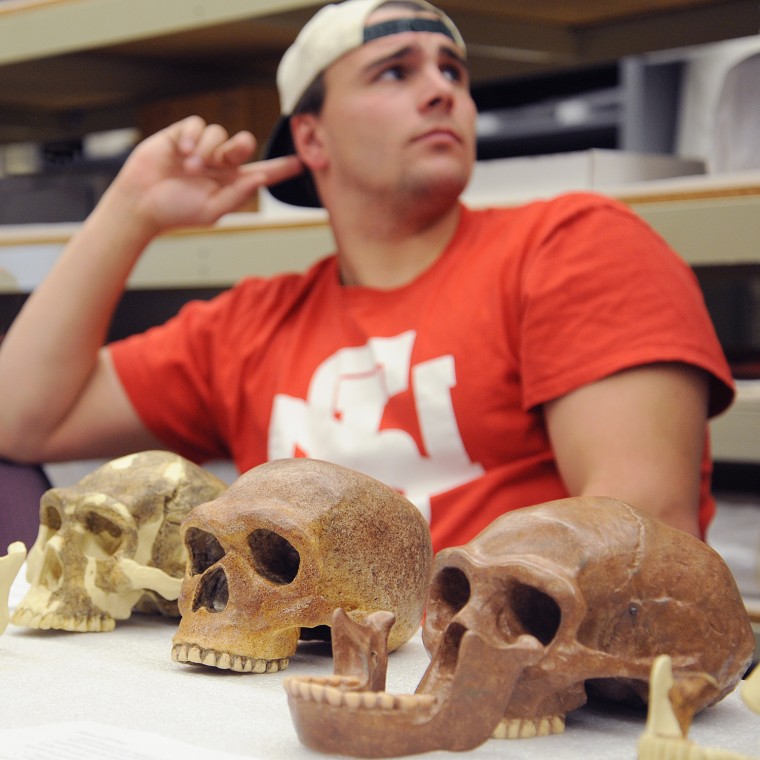
In the 1920s, a team of scientists working in the Zhoukoudian cave system in Beijing, China unearthed Peking Man, a roughly 700,000 year-old sample of Homo erectus. After the communist revolution of 1949, Peking Man became a prominent figure in bringing science and the story of human evolution to the masses.
As part of the required reading for the HIST 368 class, History of Science and Technology in Modern China, Ying Jia Tan, assistant professor of history, is having his students read The People’s Peking Man, written by Wesleyan alumna Sigrid Schmalzer ’94. The People’s Peking Man offers a skilled social history of 20th century Chinese paleoanthropology and a compelling cultural history of assumptions and debates about what it means to be human.
On Nov. 11, Tan brought his students to the Wesleyan University Anthropology and Archaeology Collections (WUAAC) to offer them a tangible and hands-on lesson to complement their reading.
Jessie Cohen, lab manager, prepared for the class by displaying fossil and extant replicas including Australopithecus afarensis (“Lucy”), Homo erectus (“Peking Man” and “Java Man”), and Homo sapiens. She also included several stone tools which originate from the Paleolithic era, a prehistoric period in human history that lasted approximately 2.5 million years. These particular stone tools are associated with specific dates and locations that overlap with Homo erectus production and usage.
“The juxtaposition of these widely ranging fossil replicas, modern Homo sapiens, and stone tools is representative of the changing environment, physical demands, and technological advances noted throughout human evolution,” Cohen explained.
She also displayed a Chinese newspaper / Chinese-American school brochure came to the collection by way of missionaries in the early 1900s.
“I thought it would be a great idea for the students to see the replicas of Peking Man and think about how the Peking Man was constructed by anthropologists,” Tan said. “Seeing the stone tools and skull replicas, we can really question the narrative of the Peking Man as the ancestor of the Chinese people created during the Communist era.”
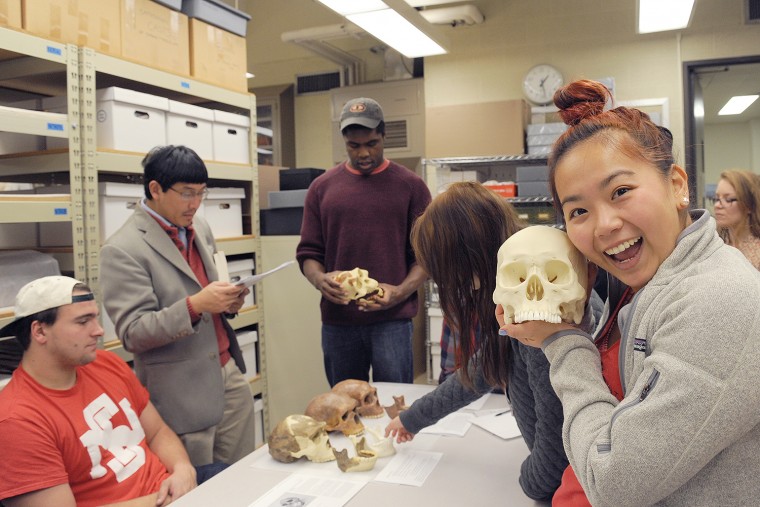
HIST 386 student Anna Lu ’17, who is majoring in the Science in Society Program, said she’s always been an avid kinesthetic learner. Professor Tan “has done a phenomenal job incorporating many university resources into our studies.” The class already visited the College of East Asian Studies to learn about silk garments that Medieval Chinese judges wore in court, and prior to that, the class examined old world atlases, where gold leaves were used to fill in certain landmarks.
“I love that we’re able to use the university’s resources to explore things such as the skulls which we read about,” Lu said. “After having observed the skulls, it was quite obvious the Peking Man was not very intelligent due to the difference in bone structure around the eye sockets, due to the blunt force trauma when males would fight head first, in comparison to the Java Man’s skull.”
The core of the Archaeology and Anthropology Collections consists of more than 30,000 ethnographic and archaeological objects that were once part of the former Wesleyan Museum, a natural history museum that occupied part of the Orange Judd Hall of Natural Sciences from 1871-1957. Highlights of the collection include Hopi and Tewa pottery, Stone Age artifacts from Mount Carmel Caves, Staffordshire pottery excavated in Middletown, artifacts from Alaska, the Pacific Northwest and Mexico, a Hartford Old State House Commemorative Plate, and an ancient Greek and Roman coin collection.
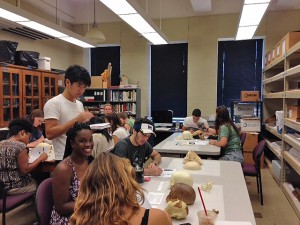
Cohen encourages Wesleyan faculty to use the collections for their teaching. On Sept. 16, students enrolled in the PSYC 221 Human Memory course, taught by Erika Fulton, visiting professor of psychology, visited the collections to learn more about memory and the brain.
“They had to think about the relationships among a changing environment, memory demands, and brain lobe development,” Fulton said. “I think it was a fun way for them to learn a little archaeology, anthropology and psychology, and a much more engaging way to learn brain lobes than through a lecture.”
On Nov. 17, Rachel Greenblatt, visiting assistant professor of history, explored WUAAC’s ancient coin collection with her HIST 247 Jewish History: From Biblical Israel to Diaspora Jews class. The class also looked at ancient oil lamps with religious affiliations. Photos of Greenblatt’s class is below:
(For more information on WUAAC, e-mail Jessie Cohen.)

